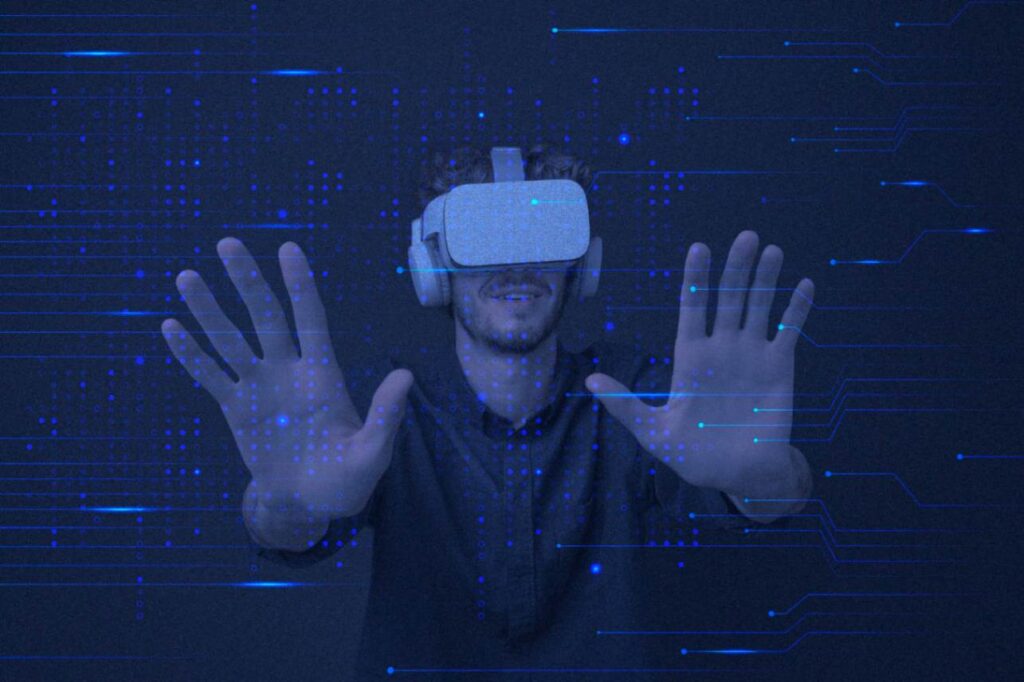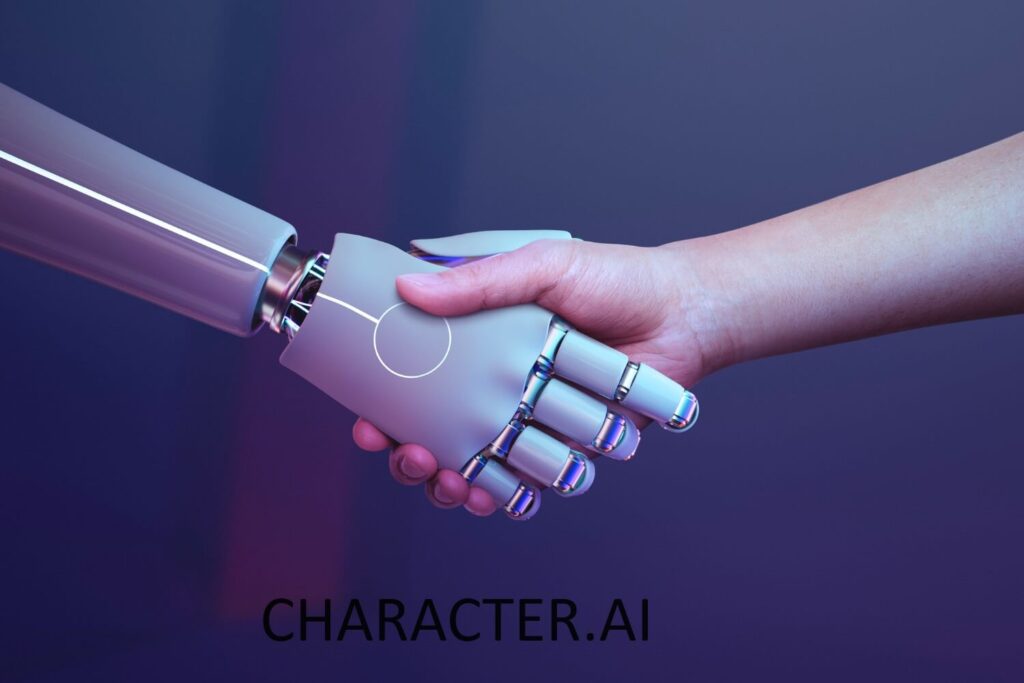Haptics is a fascinating field that has gained significant attention in recent years, especially in technology. At its core, haptics refers to the science and technology of tactile sensation. It focuses on creating experiences of touch and interaction through various feedback mechanisms.
Haptic Technology Allows You to Experience the Sensation of Touching Virtual Objects.
In the current era of digital technology, haptic feedback plays a crucial role in improving user experiences on a variety of devices and applications. Whether it’s smartphones or virtual reality headsets, adding haptic feedback provides a new level of realism and immersion, making interactions more intuitive and engaging for users.
In this article, we will explore haptics, its various types of feedback, its benefits, drawbacks, and its applications.
What Is Haptics?
Haptics is a fascinating scientific field that deals with the study of touch and the development of technology that can replicate the sense of touch through haptic interfaces. The word “haptic” has its roots in the Greek word “haptesthai,” which means “to touch.” Haptics have been used in various fields since the 1970s, including medical equipment and video games.
Haptic interfaces enable tactile interaction with virtual environments (VEs) or digital devices. They create sensations that simulate the sense of touch, such as texture, pressure, and vibration. These sensations enhance the user’s sense of immersion and realism while performing tasks.
Haptic scientists, engineers, and designers, also known as “hapticians,” use their knowledge and expertise to create tactile feedback mechanisms that can simulate a variety of tactile sensations, from the softness of a feather to the roughness of sandpaper. By harnessing the power of haptics, we can create immersive experiences that engage all of our senses and enhance our interactions with technology.
Haptic sensing refers to the perception of touch and involves two forms of sensing. Tactile sensing involves detecting force on the skin surface, while kinesthetic sensing involves sensing body movement and muscle strength.
Types of Haptic Feedback

Haptic feedback, also known as tactile feedback, encompasses a variety of technologies and mechanisms designed to simulate the sense of touch or physical sensations in users interacting with digital devices or virtual environments. Here are some common types of haptic feedback:
1. Vibration Feedback:
One of the most familiar forms of haptic feedback, vibration feedback uses oscillating motors or actuators to create tactile sensations, such as vibrations or pulses, in response to user interactions. It is commonly found in smartphones, game controllers, and wearable devices, providing alerts, notifications, or tactile cues to users.
2. Force Feedback:
Also known as resistive feedback, force feedback simulates resistance or pressure sensations when interacting with digital interfaces. It replicates the sensation of pushing, pulling, or pressing against virtual objects, enhancing realism and immersion in gaming, simulations, and virtual environments.
3. Tactile Feedback:
Tactile feedback involves the simulation of touch sensations on the skin surface, providing users with the sensation of texture, pressure, or shape when interacting with digital interfaces. It can be achieved using mechanisms such as microfluidics, electrostatics, or mechanical actuators, enhancing the user experience in devices like touchscreens, keyboards, and touchpads.Tactile feedback involves the simulation of touch sensations on the skin surface, providing users with the sensation of texture, pressure, or shape when interacting with digital interfaces. It can be achieved using mechanisms such as microfluidics, electrostatics, or mechanical actuators, enhancing the user experience in devices like touchscreens, keyboards, and touchpads.
4. Texture Feedback:
Texture feedback aims to simulate the feel of different surface textures or materials through haptic interfaces. It allows users to perceive tactile details such as roughness, smoothness, or graininess, enhancing realism and immersion in virtual reality environments, gaming simulations, or design applications.
5. Kinesthetic Feedback:
Kinesthetic feedback, also known as motion feedback, involves the perception of body movement and muscle strength when interacting with haptic-enabled devices. It provides users with a sense of proprioception and spatial awareness in virtual environments, enhancing the realism and naturalness of interactions in applications such as motion controllers or surgical simulations.
6. Thermal Feedback:
Thermal feedback utilizes changes in temperature to provide tactile sensations, such as warmth or coolness, in haptic interfaces. It adds an additional layer of immersion and realism to virtual experiences, allowing users to perceive environmental conditions or stimuli based on temperature cues.
7. Ultrasound Feedback:
Ultrasound feedback utilizes ultrasonic waves to create tactile sensations on the skin surface without physical contact. It can produce sensations of pressure, vibration, or texture, offering new possibilities for non-invasive haptic interactions in applications like medical simulations, remote surgery, or augmented reality.
8. Electrotactile Feedback:
Electrotactile feedback uses electrical stimulation to generate tactile sensations on the skin surface. It modulates the electrical signals to mimic sensations such as pressure, tingling, or tapping, providing users with tactile feedback in devices like touchscreens, wearable gadgets, or prosthetic limbs.
Benefits of Haptic Technologies

Haptic technologies offer a range of benefits across various industries, revolutionizing user experiences and interaction methods. Here are some key advantages of haptic technologies:
1. Enhanced User Engagement:
Haptic feedback creates a more immersive and engaging user experience by providing tactile sensations that complement visual and auditory stimuli. This heightened sensory experience captivates users and increases their level of engagement with digital content, applications, and devices.
2. Improved Realism:
By simulating touch sensations, haptic technologies contribute to the realism of virtual environments, simulations, and gaming experiences. Users can feel textures, resistance, vibrations, and other tactile cues, making interactions more lifelike and convincing.
3. Increased Safety and Awareness:
In industries such as aviation and automotive, haptic feedback systems enhance safety by providing tactile alerts and notifications about potential hazards and critical information. Pilots, drivers, and operators can receive real-time feedback about the status of their surroundings, improving situational awareness and reducing the risk of accidents.
4. Precise Control and Feedback:
Haptic interfaces enable users to exert precise control over digital and remote systems, thanks to real-time feedback about forces, pressures, and movements. This level of control is essential in applications such as teleoperation, robotics, and surgical procedures, where accuracy and precision are paramount.
5. Training and Skill Development:
In fields such as healthcare and industrial training, haptic simulations provide a safe and controlled environment for practicing skills and procedures. Surgeons, pilots, and other professionals can hone their abilities and refine their techniques through realistic haptic simulations, reducing the need for physical practice on real-world equipment.
6. Innovation and Creativity:
The versatility of haptic technologies fuels innovation and creativity in product design, entertainment, and other industries. Developers and designers can explore new ways to incorporate tactile feedback into their creations, leading to novel user experiences and groundbreaking applications.
7. Accessibility:
Haptic technologies play a crucial role in improving accessibility for individuals with visual impairments or disabilities. Tactile feedback can convey information and cues that would otherwise rely on visual or auditory signals, making digital content and devices more inclusive and accessible to a wider range of users.
8. Market Differentiation:
Products and services that integrate haptic technologies stand out in the market due to their unique sensory capabilities. Businesses can leverage haptics as a competitive advantage, attracting customers who value immersive experiences and advanced interaction features.
Drawbacks of Haptic Technologies
While haptic technologies offer numerous benefits, they also come with certain drawbacks and challenges that need to be addressed. Here are some of the key drawbacks of haptic technologies:
1. Cost and Complexity:
Implementing haptic feedback systems can be costly and technically complex, especially for small-scale applications or consumer products. The hardware and software required to deliver realistic tactile sensations often require significant investment in research, development, and production.
2. Power Consumption:
Haptic feedback mechanisms, such as vibration motors or actuators, consume additional power, which can impact the battery life of portable devices like smartphones, tablets, and wearable gadgets. Balancing the need for tactile feedback with energy efficiency remains a challenge for device manufacturers.
3. Limited Sensory Range:
While haptic technologies can simulate a wide range of tactile sensations, they may not fully replicate the complexity and richness of real-world touch experiences. Users may perceive haptic feedback as artificial or less nuanced compared to physical interactions, particularly for subtle sensations like texture or temperature.
4. Size and Form Factor Constraints:
Integrating haptic feedback components into compact devices or wearables can be challenging due to size and form factor constraints. Miniaturizing actuators and other haptic elements without sacrificing performance or durability requires innovative engineering solutions.
5. User Adaptation and Preference:
Haptic feedback is subjective, and users may have varying preferences and sensitivities to tactile sensations. Some individuals may find certain types of haptic feedback distracting, uncomfortable, or even irritating, leading to reduced user satisfaction and adoption.
6. Maintenance and Durability:
Haptic feedback systems, particularly those with mechanical components like vibration motors, may be susceptible to wear and tear over time. Regular maintenance and replacement of worn-out parts may be necessary to ensure consistent performance and reliability.
7. Integration Challenges:
ntegrating haptic technologies into existing devices, interfaces, or applications can pose integration challenges, especially when compatibility issues arise with different operating systems, platforms, or software frameworks. Standardization and interoperability efforts are ongoing to address these compatibility issues.
8. Complexity of Programming and Design:
Developing haptic feedback experiences requires specialized knowledge and skills in programming, human-computer interaction, and sensory perception. Designing effective haptic feedback patterns and interfaces that enhance user experiences without overwhelming or distracting users can be a complex and iterative process.
Despite these drawbacks, ongoing advancements in haptic technology research and development aim to overcome these challenges and unlock the full potential of tactile feedback in various applications. Addressing issues related to cost, power consumption, sensory fidelity, user preferences, and integration will be crucial for realizing the promise of haptic technologies in the future.
Importance of Haptics in Various Industries

Haptic technology finds applications across various industries, enhancing user experiences and enabling new functionalities. Some key applications include:
| Industry/Application | Role of Haptic Technology | Example |
|---|---|---|
| The Metaverse | Creates immersive experiences by allowing users to feel textures, resistance, and weight in virtual environments. | Meta (formerly Facebook) investing heavily in haptic technologies for metaverse development. |
| Space Exploration | Enables interaction with remote robotic systems and control interfaces for ground crews and astronauts. | European Space Agency's METERON project utilizing haptics for remote robot operation in space. |
| Aviation | Enhances pilot awareness and safety through tactile cues about potential hazards and aircraft status. | Flight simulators using haptic technology to simulate real-world conditions for pilot training. |
| Automotive Industry | Improves driver-vehicle interactions and safety with alerts and notifications about road conditions and hazards. | Vibrating seats warning drivers of nearby pedestrians to enhance driver awareness. |
| Teleoperation | Provides operators with real-time feedback about forces exerted by remote robotic systems for precise manipulation of objects. | Haptic interfaces enabling accurate control of robots handling hazardous materials or performing delicate procedures. |
| Healthcare | Transforms surgical procedures and medical training by enabling greater precision and control, reducing the risk of tissue damage. | Surgeons using haptic-enabled tools for minimally invasive surgeries with improved patient outcomes. |
| Entertainment Industry | Enhances immersive experiences in gaming, virtual reality, and movie theaters by simulating tactile sensations. | Gaming peripherals and movie theaters incorporating haptic systems for realistic sensory experiences. |
| Future Outlook | Expected further integration of tactile feedback systems in everyday lives, driving innovation and offering new possibilities for interaction and entertainment. | Advancements in haptic technology driving innovation across industries. |
Conclusion
In the world of technology, haptic technologies are a big deal. They’ve changed gaming, how we use digital stuff, and even how we learn and practice medicine. Haptics make things feel real, like you’re actually touching them. But, there are some challenges, like cost and making everything work together smoothly. Still, with some creativity and hard work, we can turn these challenges into opportunities to make haptics even better. As haptic technologies keep getting better, we’re moving closer to a future where touching things on a screen feels just as real as touching them in real life.
FAQs: Haptic Technology
No, haptic technology has applications across various industries, including healthcare, automotive, and accessibility.
Yes, modern devices often allow users to customize haptic feedback settings to suit their preferences and needs.
Haptic technology is used in medical training simulations and surgical robotics to provide surgeons with realistic tactile sensations and feedback.
In virtual reality, haptic feedback enhances immersion by providing users with tactile sensations that correspond to their virtual interactions and environments.
Ethical considerations such as privacy, consent, and potential misuse of haptic technology are important factors to consider as the technology continues to advance.



